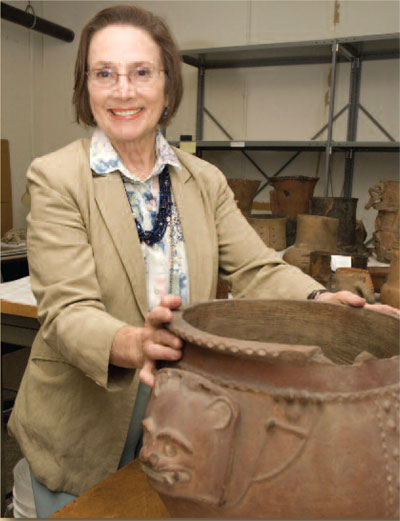 Not too long ago the Maya were thought of as an enigmatic people who had inhabited a large portion of Mesoamerica and then mysteriously disappeared. Romantic tales of ruined cities and carved monuments frequently accompanied accounts of explorers and adventurers daring the dangers of scorpions, jaguars, river rapids, and torrential rains to discover these amazing relics of the past.
Not too long ago the Maya were thought of as an enigmatic people who had inhabited a large portion of Mesoamerica and then mysteriously disappeared. Romantic tales of ruined cities and carved monuments frequently accompanied accounts of explorers and adventurers daring the dangers of scorpions, jaguars, river rapids, and torrential rains to discover these amazing relics of the past.
Today, those ideas have been replaced by the knowledge achieved through a more scientific approach. Scorpions, jaguars, river rapids, and torrential rains may continue to plague investigators, and political upheavals are always possible, but modern research is much less Indiana Jones, and much more the careful work of archaeologists who use technology to unearth previously unrecoverable details of the past; ethnographers who recognize the survival of ancient tradition in current custom; and epigraphers and linguists who recover the history of these remarkable people. Thus, the picture of the Maya as reflected in the work of current scholars provides continuity from antiquity to the present, and offers a much more expansive view of their lives.
This issue of Expedition focuses on the ways in which the past is reflected and adapted in today’s Maya culture. Ancient Maya traditions can be detected in redefined European cultural events such as the Yucatecan bullfights reported by Allan Meyers. Judith Storniolo discusses one current belief of Maya folklore that carries with it remnants of ancient Maya rituals. In the Guatemala highlands, as Allen Christenson illustrates, the K’iche’ Maya continue to practice the traditions of their ancestors. Their attention feeds the gods today as the gods were fed in the past. In her examination of ancient censers, Sarah Kurnick shows that the gods are nourished by more than food.
The Museum’s new exhibition, Painted Metaphors: Pottery and Politics of the Ancient Maya, made possible with lead support from Rohm and Haas, examines an important early museum collection and, through recent archaeological discoveries, presents a solution to a longstanding enigma about the vessels known as Chama Polychromes. Selected objects are illustrated in a special 16-page insert, an insert which would not have been possible without the support of Jim Mathieu, Editor of Expedition and the Penn Museum’s Chief of Staff.
We hope you enjoy this issue and that you will continue to follow the ever-evolving views of the ancient world in the pages of Expedition and in the galleries of the Penn Museum.
ELIN C. DANIEN, PH.D.
Guest Editor
